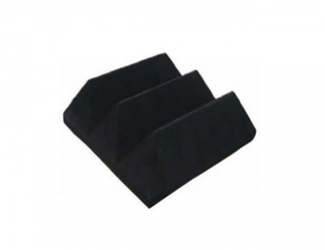
Home » RF Absorbers
The two common uses for RF Absorbers, are:
RF-absorbers have multifunctional applications.
The type of absorber is matched with the specific range of applications, testing and measurement setups and the DUT (Device Under Testing), while considering the frequencies’ range, attenuation levels, expected sounds and more.
A full technical specification can be found on each RF-absorber datasheet.
The performance of each absorber is determined by its shape and size, the materials it is made of and its chemical composition.
Special applications require special absorbers. For example: Aabsorber Honeycomb for ventilation windows; rubber and magnetic-type ferrite absorbers for floors/sidewalk in shielding chambers.
The main use of Attenuation Absorbers is to prevent noise signals to/from the shielded boxes, ensuring reliable testing and measurements, as well as preventing the transmission of signals from the device from within the box without disrupting the environment around it.
Attenuation absorbers will normally appear flat-shaped. Signals insertion loss level can range from -15dB on low frequencies (<1 GHz) and reach -35dB on higher frequencies (>18 GHz). The insertion loss level (attenuation level) is determined by the type of material (such as Carbon) and its thickness.
Our team of experts can help you select the right type of absorbers, material, shape, size and more.
We will be happy to hear from you and meet your every need.
Do not hesitate to contact for any question and details.